Have you ever heard your cat huffing and worried about it? Don’t be! Huffing is just normal behavior for cats. Let’s find out why cats huff and if it’s something to worry about.
Understanding Cat Huffing
Cats communicate with their body language; one expression they use is huffing. It’s a low-pitched exhale, like a human sigh, through the nose and mouth. This usually means they’re displeased or perturbed. It could be physical discomfort, environmental changes, stress, fear, or territorial conflicts. Prolonged huffing could be a sign of underlying health issues.
For example, one cat had surgery to remove a tumor near his lungs. The doctors found fluid buildup causing labored breathing and huffs. He received timely vet care and made a full recovery.
So why do cats huff? They’re telling you to chill out and stop interrupting their nap time!
Definition of Cat Huffing
Cats huff to communicate their moods. This non-vocal sound is similar to a snort and may indicate annoyance, aggression, or fear. The huffing should be observed with other body language signs like dilated pupils, flattened ears, twitching tails, or hissing sounds. Together, these cues can help decipher the cat’s emotions.
If the cat’s huffing is accompanied by lethargy and loss of appetite over time, it could be a sign of an underlying medical condition. Owners should take time to understand their cats’ behavior patterns and body language to figure out their moods accurately.
Reasons Why Cats Huff
Cats huff for numerous reasons, such as being aggravated or aggressive. It’s a warning that they don’t want to be disturbed. It can also indicate a health issue. To work out why your cat’s huffing, watch their body language and talk to a vet if needed.
Huffing can also be during fun with owners or other cats. This is usually linked to casual body language and games.
It’s not always a problem when cats huff. However, be aware of any changes in their behavior and get expert help if needed.
Medical issues that could cause huffing include pneumonia, asthma, bronchitis, heart disease, or nose/sinus complications. Cats have many ways to show unhappiness – the ‘I’m annoyed’ huff or the ‘Eww, what’s that smell?’ huff.
Different Types of Cat Huffing
Cats use vocalizations and postures to communicate. One of these is the distinct cat huffing. There are various types of cat-huffing episodes.
- Mild huffing signals anxiety or excitement.
- Severe huffing is louder and longer and could mean pain or respiratory distress.
- Aggressive huffing comes with body language like an arched back, dilated pupils, and a twitchy tail. This is a sign the cat feels threatened.
- Reverse sneezing and huffing sound similar but is not a medical emergency.
If your cat is huffing, try to create a positive distraction by speaking softly and offering treats. Check out the signs and symptoms section to find out if your cat is huffing or channeling their inner Darth Vader.
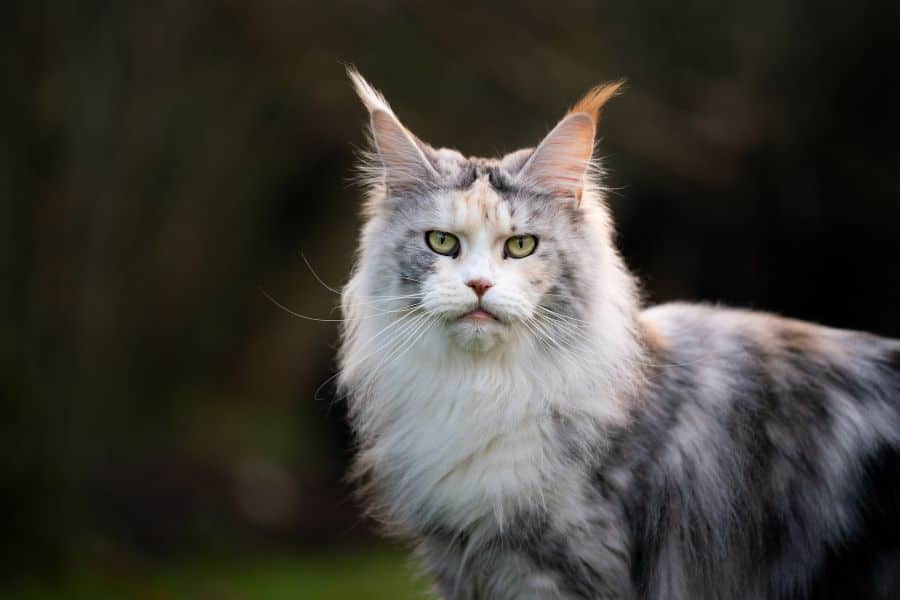
Signs and Symptoms of Cat Huffing
Cat huffing is the sound cats make while exhaling. It could come with signs like vocalization, aggression, anxiety, sneezing, or coughing. Observe these signs and get veterinary help if they don’t go away.
Other signs of huffing include faster breathing, lethargy, or apathy toward usual activities. Check the environment for changes like loud noises, unknown animals, or scents. Comfort your cat and help them relax.
If you’re not sure what’s causing huffing, get professional help. Your vet can find out the cause and provide treatment. Offer mental stimulation, too, to avoid boredom.
In the meantime, an air purifier or dehumidifier can help with allergies. Clean surfaces to reduce dust and allergen exposure. Bottom line: your cat’s behavior may need decoding. Good luck!
Behavioral Cues
Cats often exhibit signs of their emotions and attitudes. These signs may be vocal or body-related, helping people to understand their furry friends better. One such sign is huffing, which is a short, forceful exhalation of air through the nose. Though it may appear aggressive, huffing can also signify fear or anxiety.
When cats feel threatened, they may huff as a warning. Flattened ears, dilated pupils, and raised fur usually accompany this. Sometimes, cats may huff due to frustration or playfulness, especially during games with humans. Observing other cues alongside huffing is essential to interpret the cat’s mood accurately.
In addition to huffing, cats show many other signs of their feelings. For instance, purring typically shows contentment and relaxation, while hissing expresses agitation or defensiveness. Body language is also important; an arched back and bristling tail could be signs of anger or fear, while a relaxed posture implies comfort and trust.
A cat owner noticed their normally loving tabby huffing when approached for cuddles. Upon closer inspection, they realized the cat had a painful injury on its paw, causing discomfort when handled. By getting veterinary care and giving the cat space to heal, they rebuilt trust and stopped the huffing. So, watch your cat’s body language – they may be trying to tell you something!
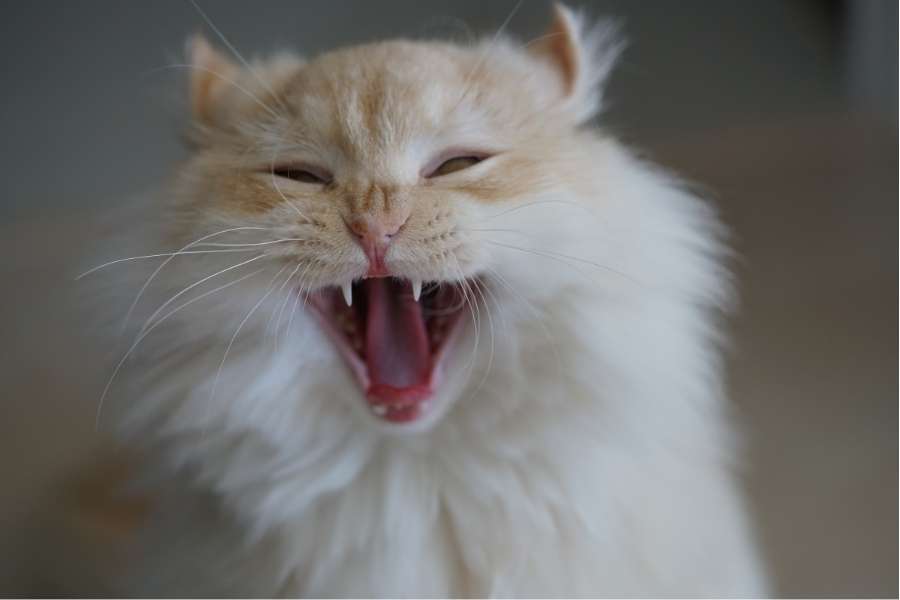
Physical Cues
Cats huff to show their moods. It can mean discomfort or irritation. It comes with other signs like pinned ears, dilated pupils, arched back, and loss of interest in surroundings. Usually, it shows they want space.
Huffing doesn’t always mean aggression. Please pay attention to your cat’s body language to understand them. If they huff often or for long, take them to the vet. It might be a health issue.
So why do cats huff? To remind us who’s in charge!
Why Does Cat Huff: The Science Behind It
Cats huff for various reasons. It’s a form of communication to express emotions, not always negative. For example, they may huff if they smell something unpleasant. It can also be a way to soothe themselves when stressed. Cats with respiratory problems may also huff.
Every cat is different – some huff more than others, depending on their personality. It’s important to watch the body language and context to understand why they huff. PetMD states cats have over 20 vocalizations. If your cat is huffing, offer them therapy or catnip to ease their troubles.
How to Respond to Cat Huffing
Cats communicate in many ways – one of which is huffing. To understand this, pay attention to your cat’s body language and context. This helps you adjust or give support if needed.
If other signs of stress or aggression accompany huffing, create a safe and calm environment for your cat and check for any medical issues. Usually, it’s just a way for cats to show dissatisfaction.
It’s important to remember that each cat is different, so take time to observe and understand their behavior. This helps you know when they’re happy, comfortable, or stressed.
Cats’ communication comes from their wild ancestors, used for survival, like hunting or defending themselves. Knowing how to respond to your cat’s signals can improve your bond and make sure they have a positive life.
So, get out your detective hat and observe your cat’s body language!
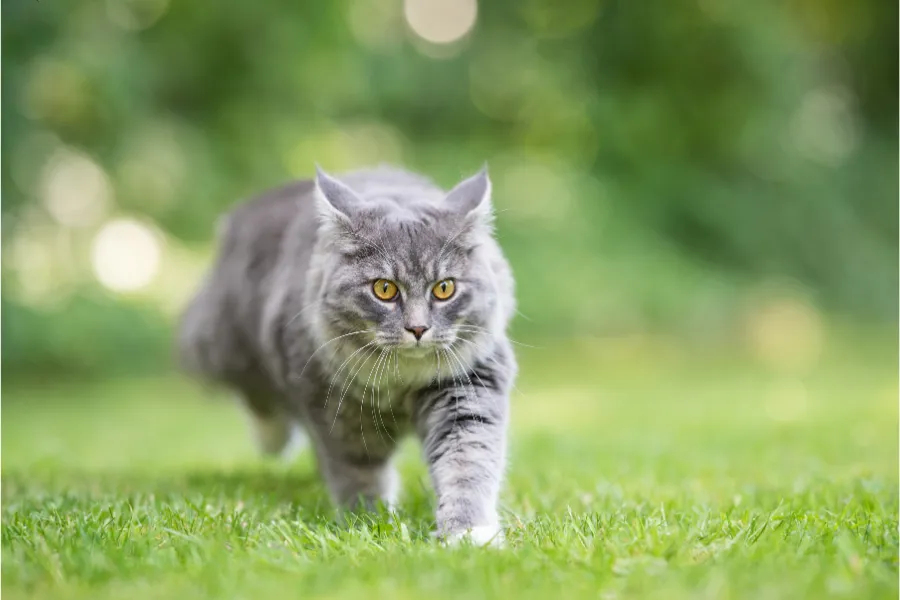
Stay Calm and Observe Your Cat’s Body Language
When your cat huffs, it’s a sign of discomfort or stress. Check their body language. Ears pushed back? Tense muscles? Flattened whiskers? These signs show if they’re unhappy or unwell.
You need to be aware of non-verbal cues. They might huff if there’s noise or strangers. Socializing them helps keep them happy and healthy.
Huffing is normal, but take note of how often it happens. Regular vet check-ups can help you identify any issues. Please don’t ignore any behaviors, as they can worsen over time. Care for your fur baby with patience, love, and timely interventions. Give them a safe space, just like you deserve your own.
Create a Safe Space for Your Cat
When it comes to your feline friend’s well-being, designating a calming and secure area is key! Creating a Comforting Zone for Your Cat is critical for their physical and emotional health. Here’s how to build a Safe Haven for Your Cat:
- Dedicate a special space just for your cat;
- Include beds, scratch pads, and toys;
- Utilize Feliway diffusers or calming scents;
- Stop intrusions from other pets or loud activities.
Bear in mind cats are all individual. Be patient with your furry companion as they adjust, observing and making changes accordingly. The Sanctuary Space for Your Cat can also be vital to their training. Without distractions or stressors, they can better absorb positive behaviors.
Surprisingly, giving cats their private zones has existed for thousands of years! Ancient Egyptians viewed cats as sacred and devoted special areas in their homes to them.
Finally, providing your kitty with an oasis makes them feel at home and boosts their mental health. Why not make a Calming Area Just for Your Cat? They’ll thank you! And if your cat is huffing like a chain-smoking asthmatic, don’t hesitate to ask for help – that’s not normal!
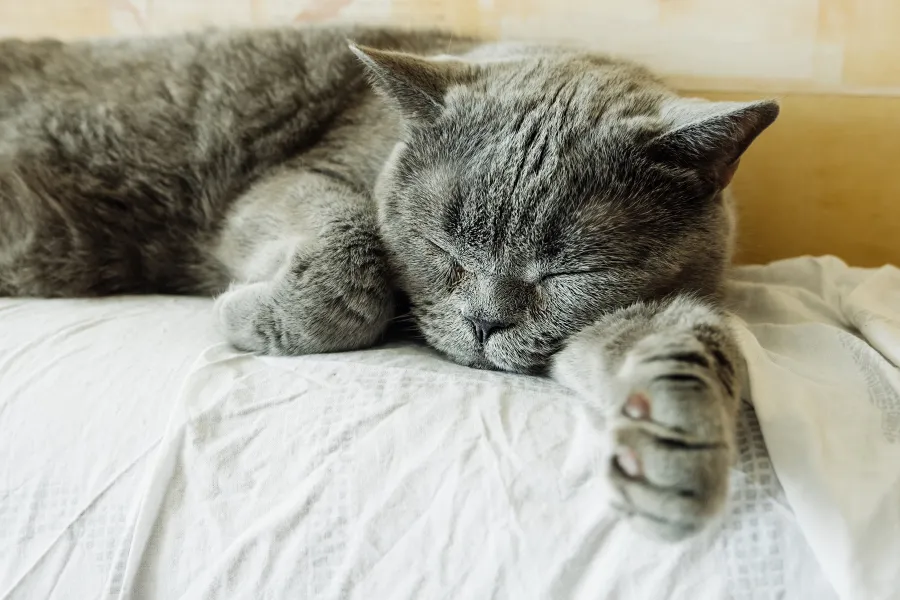
Seek Professional Help if Needed
If your cat’s huffing is concerning, don’t delay getting veterinary help. Acting early may stop any health issues from getting worse. Your vet will do a physical exam and tests or suggest behavior tips that fit your cat’s needs. Cats are experts at concealing pain and discomfort, so searching for help will put your mind at ease.
Changes like decreased appetite, aggression, tiredness, or excessive vocalization may mean a health issue. If these show for over two days or seem severe, seek veterinary help immediately.
Sometimes cats adjust to a new environment, so give them some time. According to Vetwest Animal Hospitals in Australia, respiratory problems usually cause huffing in cats.
And remember, your cat is judging you as much as you’re judging it!
Avoid Punishment and Harsh Actions
Toss away hard treatments and encourage positive feedback.
Avoid punishing cats for bad behavior; it can hurt their mental health, making them anxious, scared, or mad.
Cats react best to kind rewards, not punishment.
Use a soothing voice, scratch them, or play with toys – praise is the key to getting your cat to understand.
Tip: Positive reinforcement is the most successful way to teach cats.
Stop your cat’s grumpy attitude with treats and toys, or you’ll be in trouble!
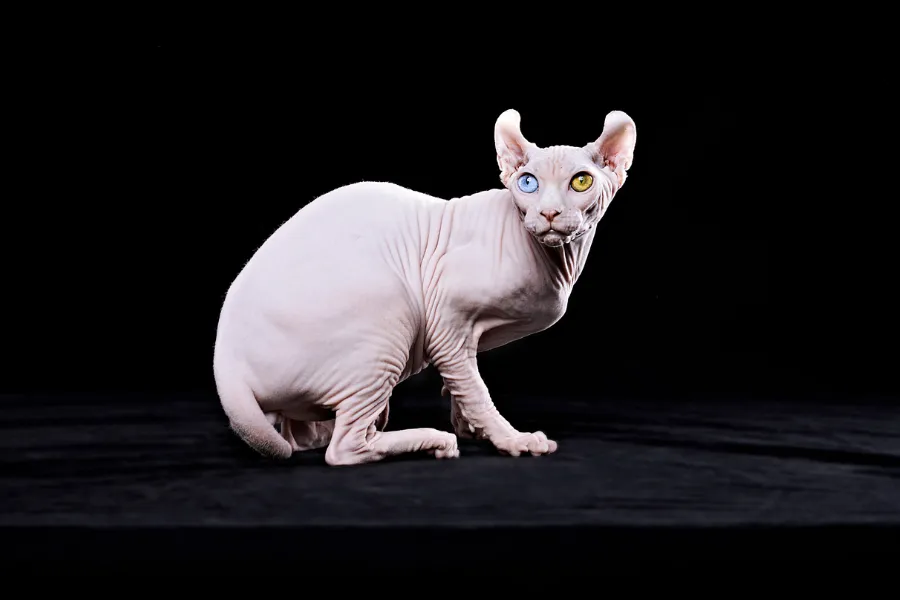
Prevention and Treatment
As cat owners, preventing and treating our furry friend’s huffing and panting is vital for their well-being.
We can stay ahead of potential issues by:
- Encouraging hydration
- Maintaining a healthy weight
- Providing access to fresh air
- Feeding cats smaller meals more frequently to avoid overexertion
Treat huffing with calming techniques such as a peaceful environment and gentle touch. If it persists or worsens, consult a veterinarian.
Certain breeds of cats may be more prone to respiratory issues, but preventive steps are key for all cats.
Don’t let love become a fear of missing out on something as important as respiratory strength. Take the necessary steps to prevent and treat huffing for your cat’s best quality of life. Remember, cats huff for various reasons, but they’re still purr-fect little balls of fluffs that we can’t help but love.
Conclusion
Cats may huff when they’re annoyed or unhappy. But this alone isn’t a worry – unless the huffing is excessive or accompanied by uncharacteristic behavior, like aggression or listlessness. In this case, it’s best to consult a vet to see if there are any health problems.
Huffing can also be a sign of communication. Cats may huff if they need attention or feel stressed. It’s good to give them extra attention and love.
Every cat is unique. So please pay close attention to their body language and vocalizations. This will help you understand their needs and emotions.
Keep an eye out for any strange behavior in your furry friend. If in doubt, always consult a vet.
